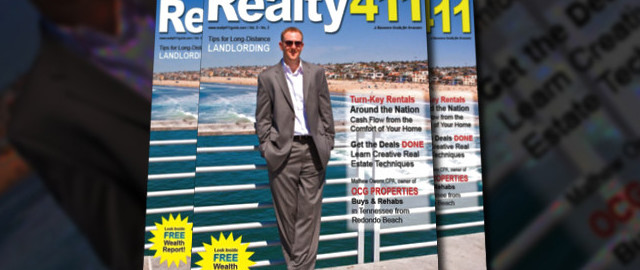Land Trusts vs. Limited Liability Companies
By Randy Hughes aka Mr. Land Trust
Recently I read an article by an attorney telling his readers not to use a Land Trust. He recommended titling your investment property in a Limited Liability Company. His reasoning was that Land Trusts are only a “deterrent” to a lawsuit and they do not provide “true” asset protection. The attorney went on explaining how any lawyer “worth his salt” would find out you are the beneficiary of a Land Trust as the result of a judgment debtor’s exam (which is a hearing in a court room…sometimes called a Citation to Discover Assets). The attorney writing this article concluded that you have “zero” privacy with a Land Trust and if you want privacy you should “save the expense” of a Land Trust and title your investment real estate directly into an LLC (Nevada or Delaware).
After over 40 years in the real estate investment business, I can spot an attorney who understands the law but does not have practical real world experience. I agree that LLC’s have better asset protection than a Land Trust, but Land Trusts have far better privacy elements than LLC’s. I use LLC’s in my business but NOT to hold title to investment property. Let’s review the benefits of using a Land Trust.
LAND TRUSTS:
- Are NOT registered anywhere on the planet
- Do not require a registered agent
- Pay no franchise taxes
- Cost nothing to form (you can form them yourself)
- File no tax returns
- Require no tax ID number
- Can be formed in a state other than where the property is located (for terrific privacy and asset protection)
- Can easily hold each property separately from other properties to keep all investments insulated
- Can have an LLC, Corporation or Personal Property Trust as its beneficiary
Experienced real estate investors understand that putting all of your properties into any one entity (be it an LLC, Corporation or a Land Trust) is a nexus for a lawsuit. Remember grandma’s advice to not put all your eggs in one basket? It makes logical sense to put each property into its own separate Land Trust and then make the beneficiary of the trust your LLC or Corporation.
This yields the best of both worlds from a privacy and asset protection standpoint. Since the Land Trust Agreement is not recorded anywhere no one can find out who the true owner of the trust is without a full blown lawsuit…which is expensive for your adversary. Furthermore, if the property is in one state, the Land Trust is formed in another state, and the LL C beneficiary is registered in a third state you get a dy-no-mite structure that is not only difficult to unravel but legally expensive to pursue. Most contingency fee lawyers would give up and start looking for another sucker to pursue.
Real estate investors are more susceptible to a lawsuit than most other Americans. The general public’s perception of a real estate investor is that they do not have any debt on their property, have lots of cash in the bank and tons of positive cash flow. So, even if the investor is upside down on their property debt and suffers monthly negative cash flow they are still at the mercy of the contingency fee lawyer and his/her dead-beat client. Keeping property isolated in separate Land Trusts makes logical practical sense to those of us in the trenches every day. A huge benefit to holding title to each property in a separate trust is the ability to finance without affecting the other properties.
You can also sell property on an installment contract basis without affecting other properties. If you title multiple properties in one LLC the lender will want to tie up all the assets of the LLC as collateral for the loan on just one property. Take your advice from a streetwise investor with decades of real-life experience. Use a Land Trust to hold title to your investment real estate…you will be glad you did!
To receive a FREE copy of my booklet “50 Reasons to Use a Land Trust” send me an email at: mailto:[email protected]







 By Jillian Ivey Sidoti, Esq.
By Jillian Ivey Sidoti, Esq. Yes, this is a very boiled down step-by-step. Yes, you will need the advice of a professional to help you along the way. However, you need to realize that if you do give all the above steps the appropriate amount of attention, there is no reason that you cannot raise the capital you need.
Yes, this is a very boiled down step-by-step. Yes, you will need the advice of a professional to help you along the way. However, you need to realize that if you do give all the above steps the appropriate amount of attention, there is no reason that you cannot raise the capital you need.
 As the new kids on the block, the business moguls captured a very large percentage of the market in a very short span of time. A large percentage of their competition has been in the private money lending sector for 20 years or more. Mehra added that the industry had always been something of an “intuitive-based” one, which both men felt kept it from growing like it could. “We wanted to deliver structure,” said Mehra. “We wanted to shift the industry from the whimsicality it had.”
As the new kids on the block, the business moguls captured a very large percentage of the market in a very short span of time. A large percentage of their competition has been in the private money lending sector for 20 years or more. Mehra added that the industry had always been something of an “intuitive-based” one, which both men felt kept it from growing like it could. “We wanted to deliver structure,” said Mehra. “We wanted to shift the industry from the whimsicality it had.” “Thanks to the stock market crash, several savvy financiers have a sour taste in their mouths, yet are still hungry for yield,” said Mehra. “We are seeing people, who would otherwise have investment portfolios centered around Wall Street now, deviating into real estate.” Today, instead of owning Microsoft as a growth stock, youthful investors would rather invest in assets they can hedge. The emerging generation with access to capital doesn’t have faith in the stock’s paper and would rather place funds into something concrete. At the end of the day, a hard asset like real property is never worth zero. They can hang their hat on that!
“Thanks to the stock market crash, several savvy financiers have a sour taste in their mouths, yet are still hungry for yield,” said Mehra. “We are seeing people, who would otherwise have investment portfolios centered around Wall Street now, deviating into real estate.” Today, instead of owning Microsoft as a growth stock, youthful investors would rather invest in assets they can hedge. The emerging generation with access to capital doesn’t have faith in the stock’s paper and would rather place funds into something concrete. At the end of the day, a hard asset like real property is never worth zero. They can hang their hat on that! Mehra and Morsi both feel strongly on not being viewed as a corporation, but as a part of a business network working conjunctively to meet each other’s needs. Out of 360 plus transactions that they’ve written, only two notices of default have occurred.
Mehra and Morsi both feel strongly on not being viewed as a corporation, but as a part of a business network working conjunctively to meet each other’s needs. Out of 360 plus transactions that they’ve written, only two notices of default have occurred. For information about MOR Financial visit
For information about MOR Financial visit 







